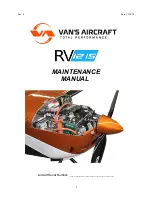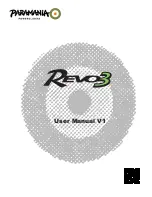
Sand Glider
For sanding or preparing floor
ready for varnishing/polishing
Code 05426
Sand Glider
Operating & Safety Guide 433
Operating & Safety Guide 433
433/01
433/01
©HSS Hire Service Group Ltd 2012 No. 433/01
Group Office: 25 Willow Lane, Mitcham, Surrey CR4 4TS
Web Site: http://www.hss.com
…any comments?
If you have any suggestions to enable us to improve the
information within this guide please e-mail your comments or
write to the Safety Guide Manager at the address below
e-mail: [email protected]
... have you been trained
The law requires that personnel using this type of equipment in
the workplace must be competent and qualified to do so.
Training is available at HSS Training
0845 766 7799
Never push the equipment beyond its design limits.
If it
will not do what you want with reasonable ease and speed,
assume you have the wrong equipment for the job. Contact
HSS Hire for advice.
Dust bags must be emptied when indicated via the full
line on the bag and before leaving the sander for any
length of time.
Dispose of wood dust carefully.
Never use a sander that has not got an sanding disc
fitted. Always use the right sanding disc
for the job and
change it as soon as it becomes clogged or damaged.
Keep the equipment clean
- you will find this less of a
chore if you clean it regularly, rather than wait until the end
of the hire period.
When not in use, store the equipment somewhere
clean, dry and secure.
EQUIPMENT CARE
FINISHING OFF
Release ON/OFF levers and unplug the sander.
Remove and dispose of the dust bag and clean the
sander.
Neatly coil its flex
ready for return to HSS Hire.
BASIC TECHNIQUES
OPERATING THE SANDER
The HSS Sand Glider is
designed to be operated in the
upright position with all sanding discs in contact with
the floor. DO NOT tilt the unit
back before switching it ON.
Having fitted a full set of four
sanding discs, wheel the machine
to the far corner of the floor,
placing it as close to the corner as
possible. You will be walking
backwards when you first
progress.
Connect the power
supply lead to the sander then
to the power supply and switch the supply ON.
Drape the cable over your shoulder to prevent it being
damaged by the sanding action
.
With all four sanding discs in contact with the floor surface,
take a firm hold of the control handles. Squeeze in the
lock off lever followed by ON/OFF lever
to start the
motor.
Once the sander motor reaches operating speed,
slowly
walk backwards manoeuvring the unit over the floor
surface.
The machine will try to move around when in
contact with the floor so be prepared.
Try to overlap the previous strip to ensure that you do not
have ‘unsanded’ areas.
The slower you move the sander the greater the removal so
keep a close eye on the surface finish and adjust your speed
as necessary.
Do not exert pressure on the machine
, let it work at its
own pace. Rushing the job will result in a poor finish and
will wear out the sanding discs quicker.
Periodically stop and inspect the condition of the
sanding discs.
Discs should be replaced when the abrasive
is worn, damaged or clogged.
Once the entire floor area has been sanded, release the
ON/OFF lever to switch the sander OFF.
edge of the card on to the outlet’s lower hook.
Pivot the card to bring the bags centre opening over the
outlet until card and outlet are flush.
Finally,
lower the
two tabs over the outlets clips
to retain the bag in place.
Removal is simply a reverse of the fitting instruction.
There is also a dust
skirt which fits
onto the outer
edge of the base
and is used to
contain the dust.
The skirt is held in
place by a
continuous velcro
strip which allows
for the skirt to be
adjusted as its
leading edge
wears.
The skirt MUST be fitted and correctly positioned
whenever the sander is in use.
Clips
Tabs
Lower
Hook
Dust
Collection
Outlet
Dust
Collection
Bag
SandGlider ©
Before fitting the next grade of disc, thoroughly vacuum
the floor and give a visual inspection to ensure the floor has
been correctly sanded.
If you rush into the job your floor may be damaged.
SANDING TECHNIQUES
The following information is for guidance only and is not
necessarily suited to your particular floor. No responsibility
will be accepted for flooring damaged by this technique.
Where the floor is in a bad condition or the boards have
warped, you can rough sand diagonally from top left to
bottom right then top right to bottom left. Once rough
sanded, continue sanding along the grain for a finish.
Always sand towards the source of light
, never across or
diagonally from it. The light will show all imperfections
when sanded in any other direction.
Floor Boards
Parquet
TRANSPORTING
VEHICULAR
When transporting the machine,
do not lay the unit down,
always keep the sander upright
with all four protected
backing pads in contact with the
floor.
Do not transport on an open
vehicle in adverse weather.
PEDESTRIAN
Tilt the sander back onto its
transport wheels, making sure that
the dust collection bag is kept clear
of the ground and the wheels.




















